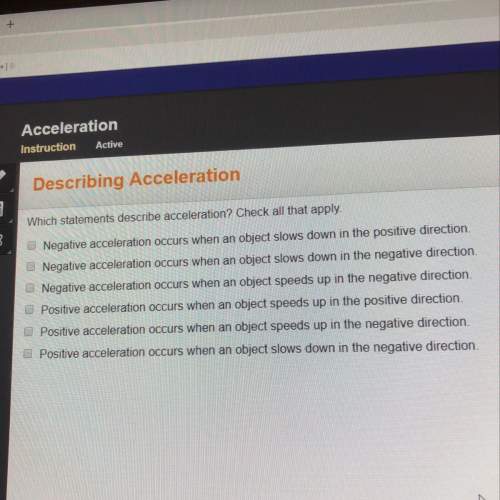
Physics, 28.09.2019 21:30 assassin42
Raindrop: the force on a small raindrop is f = m dv/dt = - yv- mg (in the y-direction.) a. find a substitution u(t) in terms of v(t) that gets rid of the pesky gravity term in the equation above, leaving you a formula similar (not necessarily identical) to .= y* u(t). b. take the indefinite integral of both sides of the formula. be careful with the constant(s) c; what happens to it/them when you take the exponential of both sides? c. substitute (t) back in, so you have a formula for the velocity of the raindrop as a function of time. d. assume the raindrop started from rest, v(t = 0) = 0. solve your equation for the unknown constant, so you have v(t) for all times t 0. e. what is the maximum velocity of the raindrop, vmax? f. the quantity m/y has units of time. discuss (1-2 sentences) the meaning m/y. g. how long does it take for the raindrop to reach 63% of its maximum velocity? 87.5%? 95%? give this in terms of m/y, and explain in a grammatically correct sentence with words) why i chose those specific what links them?

Answers: 1


Another question on Physics

Physics, 21.06.2019 16:00
In a laboratory, nakisha mixes sodium hydroxide solution with an indicator called phenolphthalein. when combined, they create a pink solution. nakisha wonders if mixing other solutions with phenolphthalein will also create this pink color. how could she use the scientific inquiry process to explore it further?
Answers: 1

Physics, 21.06.2019 20:00
Excuse ! extra points plus ! super desperate ! the position of an object does not move relative to a reference point. relative to the reference point the object _. a.) is not moving. b.) is moving.
Answers: 1

Physics, 22.06.2019 00:20
Consider the particle-in-a-box problem in 1d. a particle with mass m is confined to move freely between two hard walls situated at x = 0 and x = l. the potential energy function is given as (a) describe the boundary conditions that must be satisfied by the wavefunctions ψ(x) (such as energy eigenfunctions). (b) solve the schr¨odinger’s equation and by using the boundary conditions of part (a) find all energy eigenfunctions, ψn(x), and the corresponding energies, en. (c) what are the allowed values of the quantum number n above? how did you decide on that? (d) what is the de broglie wavelength for the ground state? (e) sketch a plot of the lowest 3 levels’ wavefunctions (ψn(x) vs x). don’t forget to mark the positions of the walls on the graphs. (f) in a transition between the energy levels above, which transition produces the longest wavelength λ for the emitted photon? what is the corresponding wavele
Answers: 1

Physics, 22.06.2019 09:00
What is a possible result of higher air temperature caused by global warming
Answers: 1
You know the right answer?
Raindrop: the force on a small raindrop is f = m dv/dt = - yv- mg (in the y-direction.) a. find a s...
Questions

Mathematics, 29.10.2021 14:00


Law, 29.10.2021 14:00


Advanced Placement (AP), 29.10.2021 14:00

Mathematics, 29.10.2021 14:00




History, 29.10.2021 14:00



Mathematics, 29.10.2021 14:00

Mathematics, 29.10.2021 14:00


Business, 29.10.2021 14:00

Physics, 29.10.2021 14:00

Physics, 29.10.2021 14:00

Biology, 29.10.2021 14:00




